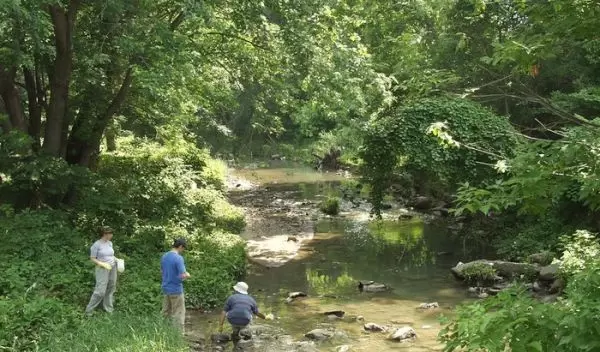
Dosing the coast: Baltimore County's leaky pipes are medicating the Chesapeake Bay
In Baltimore, Maryland, leaky sewage infrastructure delivers tens of thousands of human doses of pharmaceuticals to Chesapeake Bay every year. So reports a U.S. National Science Foundation-funded study in Environmental Science & Technology that monitored an urban stream network over a year-long period. Drug concentrations detected were persistent, variable and occurred at ecologically relevant levels.
"These are common drugs," says Doug Levey, a program director in NSF's Division of Environmental Biology. "All are known to have significant effects on human health. The discovery that they pass through our bodies largely unchanged and commonly end up in our waterways is a wake-up call because they likely impact the health of fish and other animals in unknown ways."
Pharmaceutical pollution in freshwater is a global problem that is poorly quantified. Mixtures of drugs in lakes, rivers and streams can disrupt animal biology and behavior, algal growth, and other ecological processes -- with harmful cascading effects.
Lead author Megan Fork at the Cary Institute of Ecosystem Studies says that "pharmaceuticals enter freshwaters through multiple pathways, including effluent from wastewater treatment and septic systems, as well as agricultural runoff. An important, but often overlooked contributor is aging and faulty wastewater infrastructure, which is common in many older cities."
For a year, weekly water samples were collected from six sites in Baltimore's Gwynns Falls watershed. Fork says that "because Gwynns Falls streams don't receive wastewater effluent, we were able to estimate annual loads of pharmaceutical pollution attributed to leaky pipes alone." Sites represented a gradient of development, ranging from suburban to highly urban. The team also sampled a forested reference site to the northwest of the Gwynns Falls watershed.
Samples were screened for 92 pharmaceutical compounds. Across the seven study sites, 37 unique compounds were detected. The most common was the antibiotic trimethoprim. The highest concentration of pharmaceuticals was detected where Gwynns Falls meets Baltimore's Inner Harbor. Here, the painkiller acetaminophen was most prevalent. Drug concentrations were higher at more densely populated sites.
To estimate the yearly amount, or annual load, of pharmaceutical compounds the leaky pipes delivered to the watershed, the team paired data on drug concentrations detected at the Gwynns Falls outlet with river discharge rates recorded by a U.S. Geological Survey monitoring station at the site. Annual loads were calculated for nine pharmaceutical classes.
The results: leaky pipes in the Gwynns Falls watershed deliver the equivalent of tens of thousands of doses of pharmaceutical compounds to Baltimore's Inner Harbor. That includes 30,000 adult doses of antidepressants, 1,700 doses of antibiotics, and about 30,000 tablets of acetaminophen. Concentrations were environmentally relevant -- at levels that could affect organisms' behavior, biology, and other ecological processes -- and highly variable, meaning that aquatic organisms are exposed to a constantly changing mixture of compounds.


